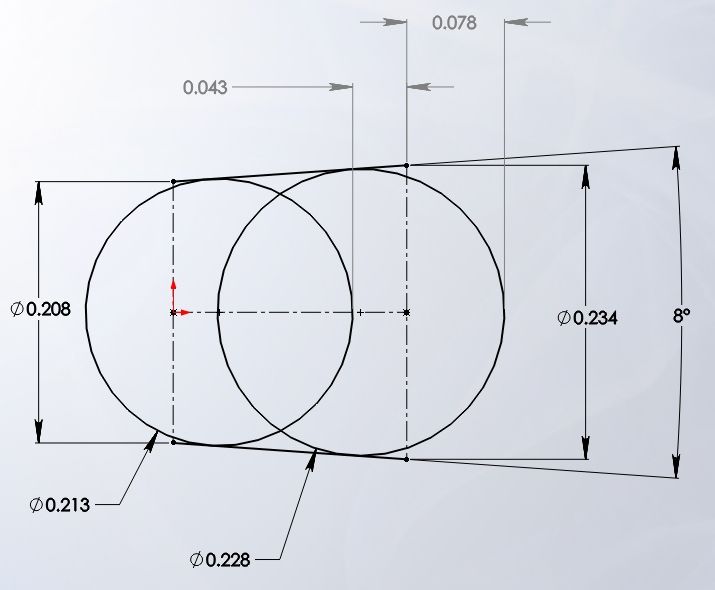Hello everyone, I have some parts I am working on right now that have a 8° Internal/Female taper on a hole (Top of hole is: .234) and (bottom of hole is: .208)
I was looking through the site trying to figure out a way to check this dimension at the machine since our CMM guys take about a million years to check anything.
Several people mentioned Gage Balls, one larger and one smaller and doing some brain-smart math to figure the angle. I understand the concept and how it could work but Can anyone walk me through the process a bit in more detail? Or have a diagram with the relevant equation?
Thanks, Whatley.
I was looking through the site trying to figure out a way to check this dimension at the machine since our CMM guys take about a million years to check anything.
Several people mentioned Gage Balls, one larger and one smaller and doing some brain-smart math to figure the angle. I understand the concept and how it could work but Can anyone walk me through the process a bit in more detail? Or have a diagram with the relevant equation?
Thanks, Whatley.



